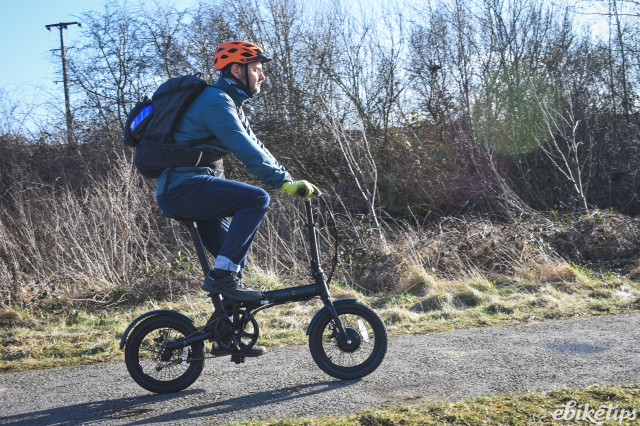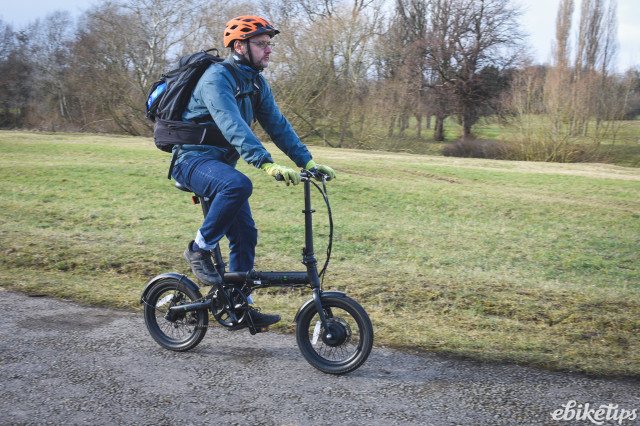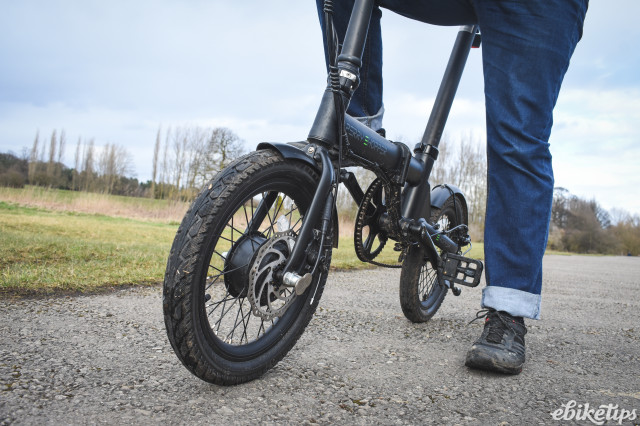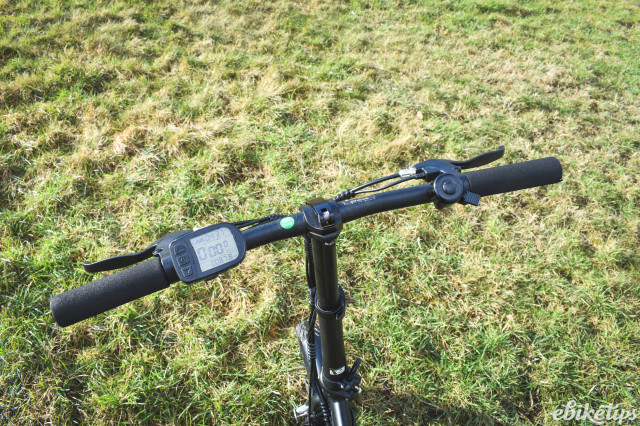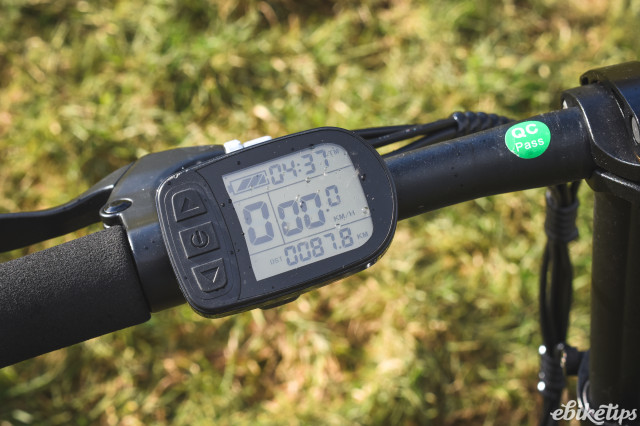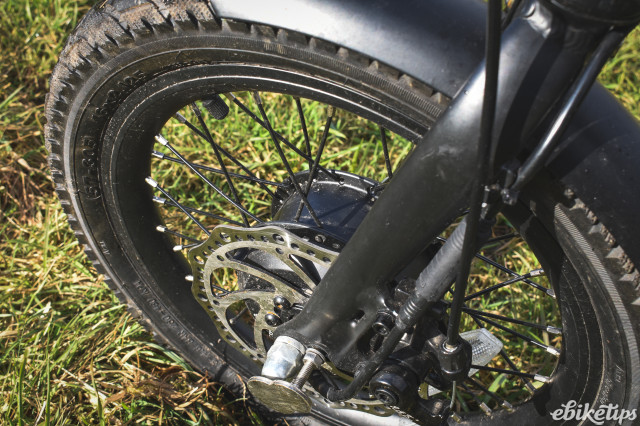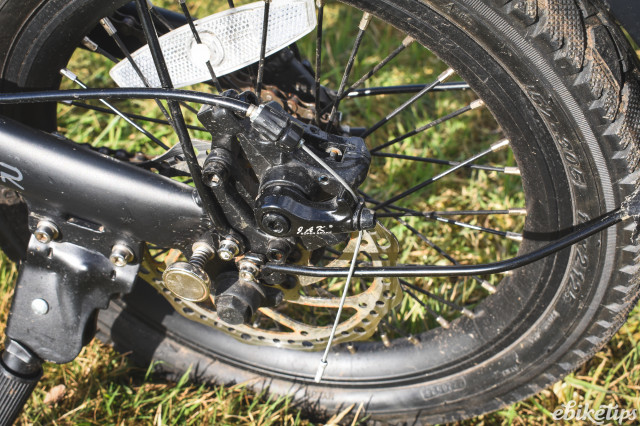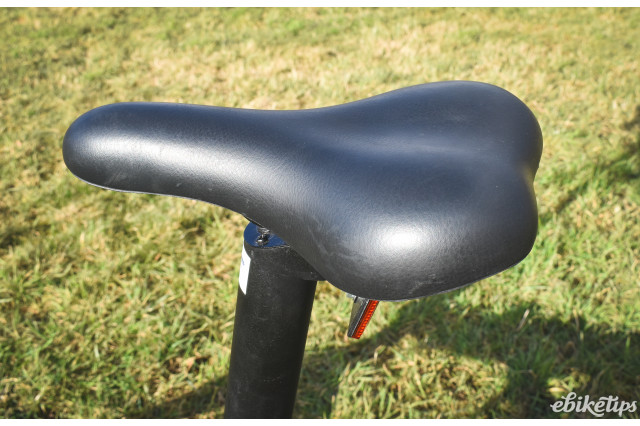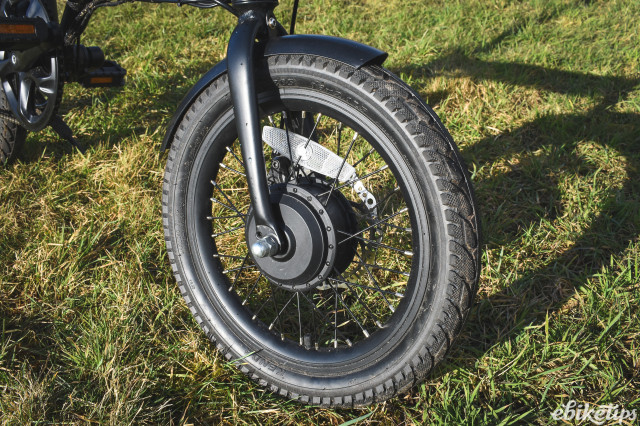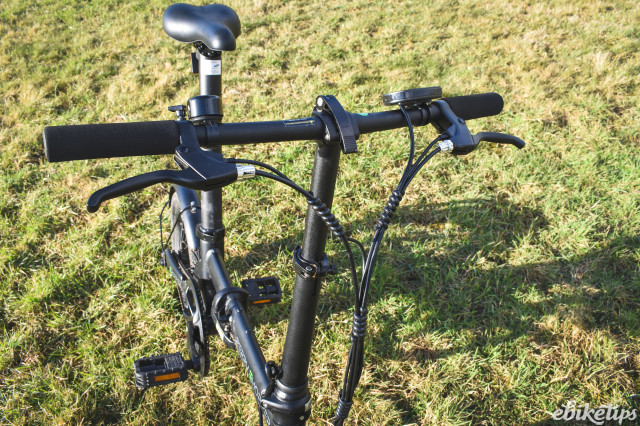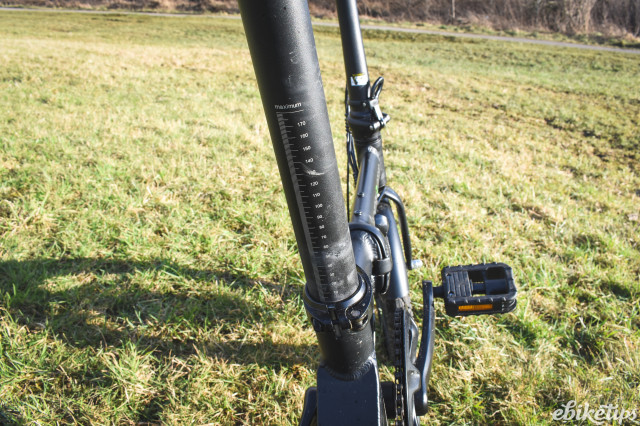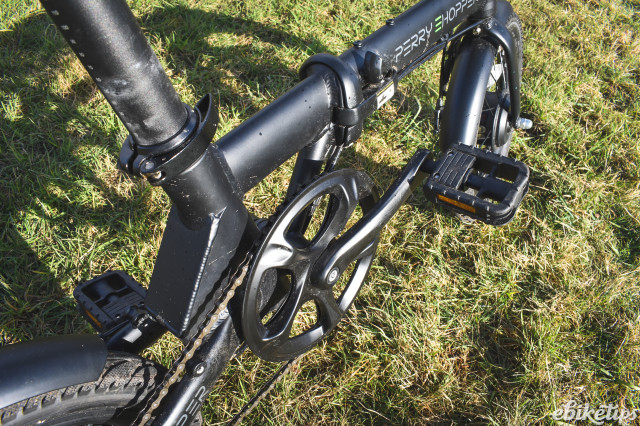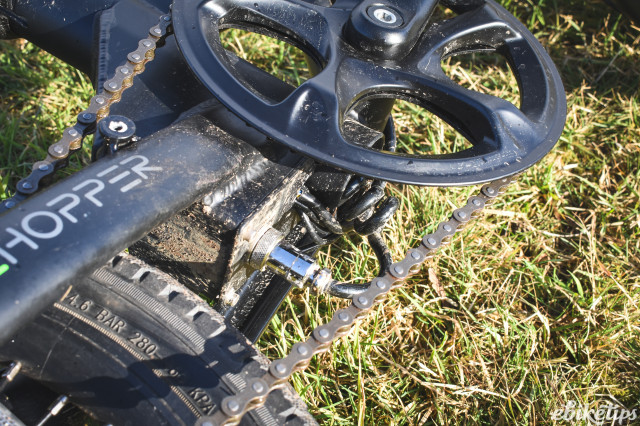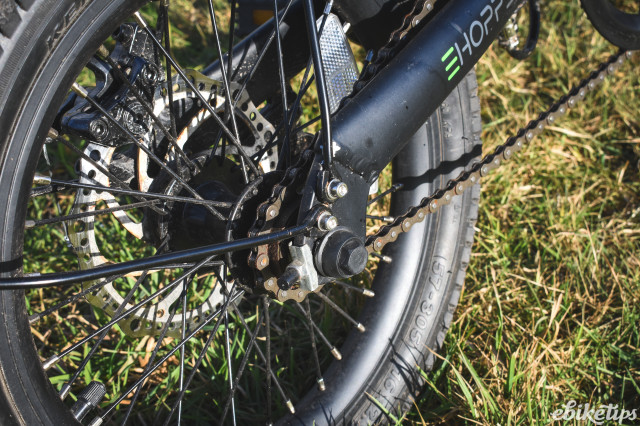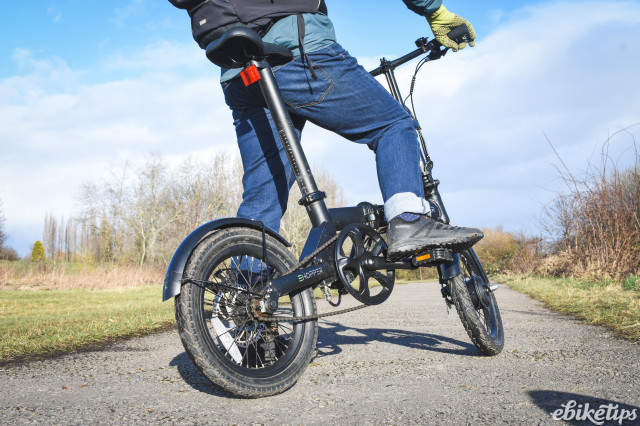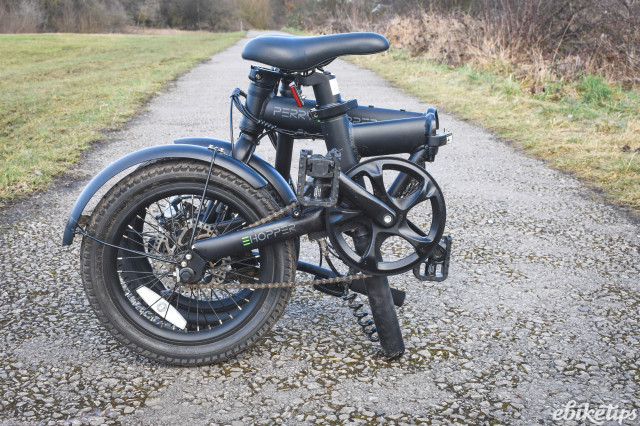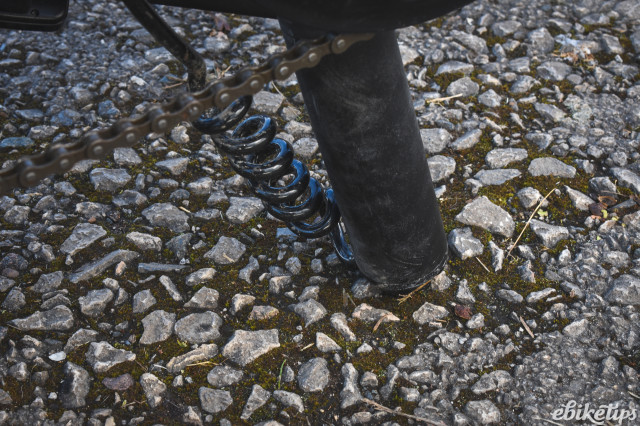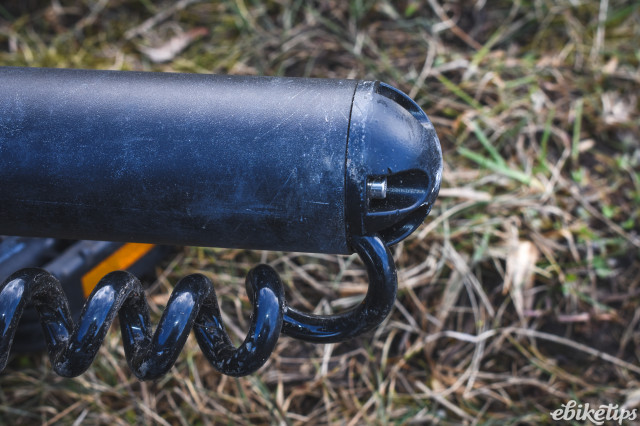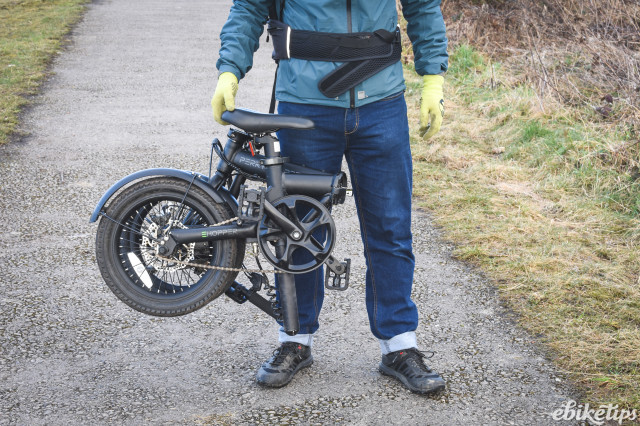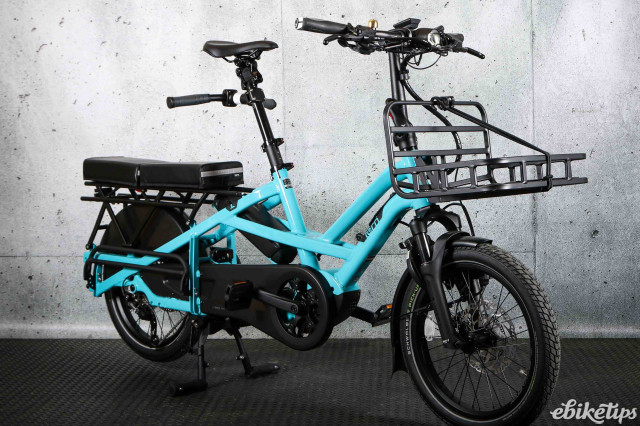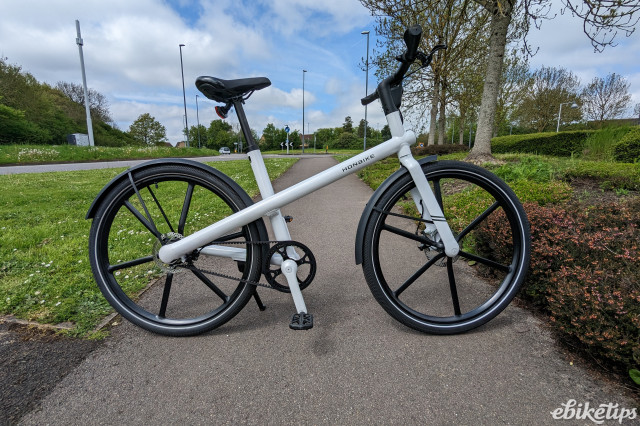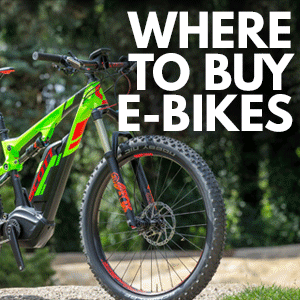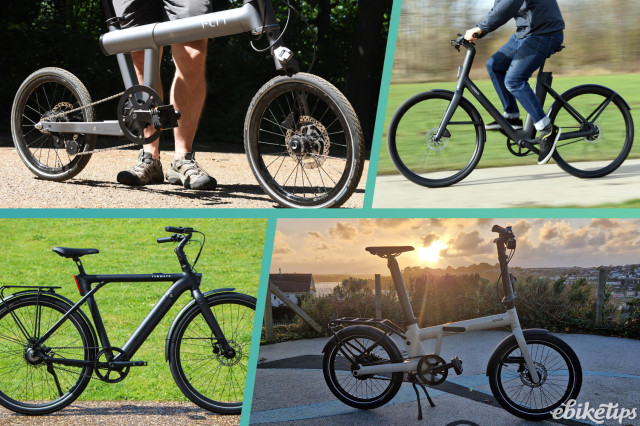Review: Perry eHopper
Overview
- Funky compact frame
- Seatpost batteries quickly removable for security
- Shock absorbing large volume tyres
- Motor lacks hillclimbing ability
- Longer front mudguard would make it a more practical towpath bike
Small, relatively lightweight single speed folders with a small hub motor seem to be all the rage at the minute. We’ve recently tested the 2021 MiRider and the FLIT-16 and now comes the Perry eHopper.
Although not the whole story, weight and folded size are big considerations for most buyers of electric folders so lets cut to the chase and see which of these three young new single speeds comes out tops – we’ve excluded Brompton and Gocycle from the comparison as they are multi-geared with bigger batteries and are considerably pricier:
Weight:
FLIT-16 15.77kg (including 230Wh 1.55kg battery, mudguards, kickstand and front and rear lights)
Perry eHopper 15.9kg (inc seatpost upgraded battery capacity of 252Wh at 2.38kg, mudguards and kickstand)
2021 MiRider 17.65kg (including 1.3kg upgraded 187Wh battery upgrade, front light, mudguards and kickstand)
Folded size (for comparison a folded Brompton is about 100 litres in volume):
FLIT 16 730mm x 680mm x 335mm / 166 litres
Perry eHopper 738mm x 630mm x 378mm / 176 litres
2021 MiRider 670mm 660mm x 430mm / 190 litres
This brief number crunch doesn’t tell the whole story but certainly shows the Perry eHopper is there or thereabouts with the immediate competition. Of course, there are other factors that might influence a purchasing decision, not least how the bike performs in the real world....
Perry eHopper frame design
The Perry eHopper might look like yet another fold-in-half design, albeit with a decently made and light looking aluminium frame, but it isn’t. They have cleverly put the batteries in the seatpost which means they can be removed as an anti-theft deterrent if left unattended. It also means you can fairly easily lighten the folded bike for easier lifting which would result in two items to carry but at 13.5kg and 2.4kg these may be easier to carry on and off a train and lift onto a luggage rack, than one larger package of 15.9kg. You will need to put the seatpost back in though if you want the folded package to stand up OK as with the seatpost removed as it rests squarely on the handlebars, which can result in the bike doing the splits.
The downside of this small-framed design is a bike that will probably only suit smaller and medium-sized riders – extended to its maximum height the seatpost felt just right for my 5’8” frame – it’s hard to see how a telescoping option could be worked into this particular design and a longer seatpost would result in a bigger folded package. The front handlebars are adjustable for height though.
The seatpost battery can be charged in situ with a neat charging port under the saddle where it’s also protected from weather, or of course it can be removed for charging. This involves unscrewing a connector on the bottom of the control electronics which have their own frame-integrated housing just behind the seatpost, another neat piece of design.
I wasn’t expecting too much from the fold itself – fold in half machines depending on magnets tend to be awkward to fold and the magnets are easily get knocked apart, but the Perry eHopper was one of the best of this type of designs I have seen. The folding process itself proved pretty quick – drop the seatpost, swivel the bars vertical and undo the secure looking frame and handlebar post catches and you are done. The only thing lacking is a catch to secure the handlebar post to the folded package though in practice it seemed to stay where it hung, along the side of the wheel.
Added to the reasonably light weight this certainly puts the Perry eHopper into train commuter category whilst the fold isn’t of the same more confidence inspiring lock together type used by Brompton and Flit.
My test bike came with the optional extra rack and it’s nice to see a folder this small with four mounting points to solidly mount such a rack on. On such a small frame full-sized panniers aren’t really feasible, though I managed to use some, avoiding ‘heel catch’ by pedalling with my heels on the pedals rather than the balls of my feet. Still, it adds a good bit of cargo capacity even with smaller panniers and a racktop bag.
There’s also a handy mount on the top of the ‘mainframe’ ideal for a water bottle or a lock
Perry eHopper: The Ride
There are five power levels on the handlebar display and I have to ratchet up to three straight away to get a discernable amount of assistance on the flat but hit a hill and, even on the maximum level five, torque feels sadly lacking, even though it grinds up moderate hills without much human input, albeit at quite a low speed which doesn’t seem to be the motor’s optimum operating speed, judging from the low pitched whining.
Why this might be is a bit of mystery; the unbranded motor is rated at 40 Newton meters torque which is certainly at the modest end of the range for an e-bike but even this rating should be a capable hill climber on a small-wheeled, lightweight e-bike. It looks similar in size to the Bafang hub motors used by MiRider and FLIT – I was initially sceptical about such small electric drivetrains used with only one gear but MiRider and FLIT proved a revelation, even though you will find yourself standing on the pedals to conquer steeper hills.
Whether it was a combination of highish gearing (the single gear tops out at about 18mph) and a motor rpm specced for a bigger tyre, or just power limiting by the control electronics it’s hard to tell from just riding; either way the bike would be transformed by more power from an okay bike to a really, really useful one.
JAK branded, cable-operated disc brakes seem similar to other brands I have tried on small wheels – they lack modulation but the real bite they possess will certainly stop you in a trice. Naturally I try and use them with a light touch. Small wheeled rim brakes have a habit of getting through rims quickly as the braking elements are so close to the ground and pick up abrasive muck so easily. In short I think they are an effective cost saving compromise avoiding the pitfalls of rim brakes and the extra cost of hydraulics (and they are easier to maintain than hydraulics as they don’t require bleeding). As you can see from the image above there's a bit of an issue with the brake alignment: the calliper isn't engaging on the full braking surface of the disc.
Tyres are chunky 16” x 1.125” Kendas, with light off-road capable tread and the large volume certainly helped take the edge of humps and bumps. There are a good range of tread patterns available in this 16" (305) diameter so, if you want something for smoother faster tarmac use, you could fit Schwalbe Marathons which would no doubt knock some weight off and lead to better battery economy. For sludgy towpaths and the like there are plenty of kids’ knobbly-tread bike tyres at this size too.
Rather than head to the hills for the test riding I decided to stick to what seemed to be the bike’s more natural territory, easygoing towpaths and railpaths with the odd moderate hill thrown into the mix.
I managed just over twenty miles from the battery which is pretty reasonable given I was often in the higher two power levels, there were considerable headwinds and there were a few sticky sections of towpath (where a longer front mudguard would have saved a fair bit of spattering). Add slick tyres and more benign riding conditions and you might find the range considerably extended.
Perry eHopper: the competition
So, having done a quick on paper comparison and a full real world test, how does the Perry eHopper compare to its nearest rivals the 2021 MiRider and the FLIT-16? As it is, the lack of motor power means it’s hard to recommend it for anyone other than a leisure rider over easygoing terrain.
Improve the motor system and you'd have a capable train commuter that would be a rail congestion buster, even up steel hills.
Of course the next step up in price are the £3kish+ bikes like Brompton and Brompton conversions, Gocycle and Tern but these are all significantly pricier and in the case of Tern much heavier, though undoubtedly they all take performance and inherent quality to the next level.
A final note on price - I tested the 252Wh version with upgraded battery capacity. The standard version comes with a 180Wh battery and costs £1499 whilst the upgrade brings the price to £1549.


